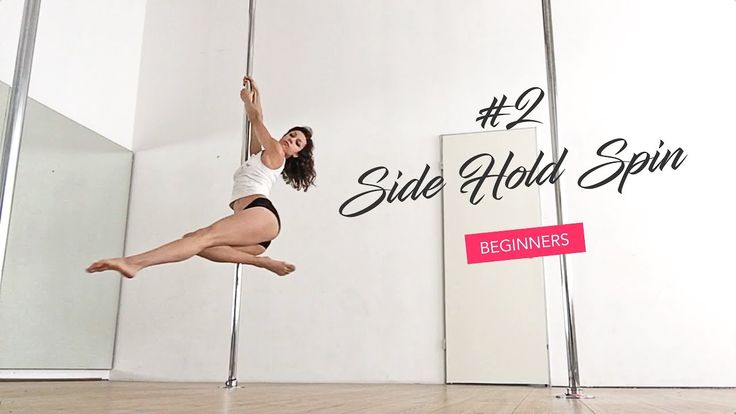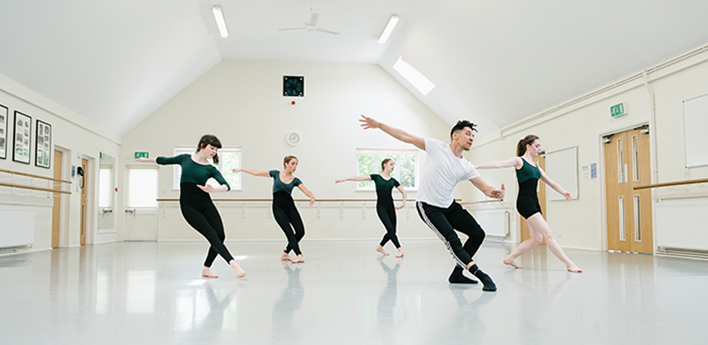How to dance the landler
Landler Allemande Dance How to for Rapunzel
Posted on by Holly Collins
Landler Allemande Dance How to for Rapunzel
A Historically Accurate Princess Dance Landler-Waltz
The Kingdom dance in “Tangled” made me want to get up and dance. In the Disney film “Tangled” the Kingdom dance began in ¾ time waltz rhythm, then changed to 2/4 polka rhythm. Rapunzel danced a form of polka in the street. However, the Austrian Landler would have been a more accurate dance for princess Rapunzel.
Landler Austrian Folk Dance:
The Landler started off as an Austrian folk dance around 1690. Some rumors are that the Landler was invented by an Austrian shepherdess. It gained popularity with the masses making its way to Vienna. Composers like Mozart wrote Landlers for laborers instead of minuets for lords. With the French revolution minuets fell out of popularity and the Landler replaced it as the people’s dance.
In 1776 Vincente Martin’s Opera “Una Cosa Rara” featured a Landler waltz. This accelerated the popularity of the Landler Waltz. As the dance floors became smoother and hob nailed shoes were cast off in favor of softer shoes, dancers could spin around the floor with ease.
Regency Landler AllemandeGerman Waltz as described by Thomas Wilson 1816- Wilson notes that the German waltz is danced with flat feet while the French waltz is danced on releve on the toes. This waltz basic is danced counter clockwise while turning around the ballroom.
“German waltzing has but one class of movements in its composition; …
The (man’s) left foot is passed into second position on the flat foot; … bringing the right foot behind the left, raising the left foot a little; … placing the left foot… in a close position and turning the body. ”
”
(Begins on the right foot, this description picks up with the second beat)“The lady,…left foot…in front, and her right foot is immediately afterwards brought into the fourth position in front again…”
The hold by Wilson, not to different from today!
“The Gentleman’s right arm placed o the back part of the shoulder of the Lady, whose left arm is placed on the back part of the shoulder of the Gentleman; the other arm of each being joined in front forming an easy curve.”
Basic movement Description
Gentlemen: Rotating to the right 180 every 3 steps.
1-Left foot side (inviting the lady to step forward between feet)
2 – right foot 5th position behind left foot (Lady forward left foot toe turned in) twist to right ending on left foot with right foot behind (Lady forward toe turned out)
3- Left foot side in a 4th position.
Ladies (based on the man’s part)
1- Right foot forward between gentleman’s feet,
2- Left Foot forward outside man’s feet,
3- Right Foot forward.
Second half
Gentleman
4- Right foot forward,
5- Left Foot forward,
6- Right Foot forward.
Ladies: Rotating to the right 180 every 3 steps.
1-Left foot side
2 – Right foot 5th position behind left foot
3- Left foot side in a 4th position.
Locking step for all the other turns (like a progressive 5th position break)- you may also dance three small runs
Landler Allemande Waltz Sequence:
Choreography based loosely choreography by I. Günther (Berlin) nach Guillaume (Paris, 1768)
- Give reverence
6 counts curtsey and bow baroque style with a plie of the knees. - Face to Face:
Gentleman offers his right hand, lead Face to face (swinging the arms), commenced with man’s left foot 6 measures, end with outside Under Arm Turn with the man’s right hand 7,8 end close position - Landler waltz basic (Schlusswalzer)
Danced in closed position 4 measures Waltz (8 measures/bars) The dancer he also lowers the right hands, transferring the girl’s right hand into his left and completes ballroom hold.
( on a side note, I have also seen this described with a lift that we did not perform) - Outside Under arm turn (Clockwise) (Dirndl drahn or Radeln)
Dance 4 m Twirling the ladies (8 measures/bars) The Gentleman Dances Locking step (like a progressive 5th position break)- or dance three small runs, while twirling his partner clockwise in front of him under his lifted right arm.
Lady dances sets of three small runs forward half a turn per bar, she is facing her partner every second bar. - Landler waltz basic (Schlusswalzer)
in closed hold 4 measures - Spanish arms.
turn lady in to cuddle with lifted left-hand counter clockwise to man’s right side, stepping on each beat 4 measures. - Reverse Spanish arms
Gentle pull with the man’s right hand to lead the lady under the joined left and right hands to pass behind the man and end slightly behind on his left side 4 measures.
- Shadow position Dirndl nachführn
Spin lady to Shadow position at the gentleman’s right side holding right to right and left to tlft hands. - Spin to Window (Fensterl)
(4 measures/bars) The dancer turns his partner twice to the right (cw) and forms the Window. The joined left hands are lowered while the right arms are bent at the elbow, upper arms horizontal and close together and lower arms vertical forming the window. The partners look at each other through that Window. In this position they dance clockwise around their central point
- Landler waltz basic (Schlusswalzer) with Spanish arms
hold with hand on waist and left to left held overhead 4 measures (this hold was particularly scandalous due to the fact a couple could converse without a chaperone overhearing them.
Prince Laendler by The Wiggles
Other period Landler’s
Zillertaler Laendler
Six landlers K606 Mozart
(Mozart wrote Landlers instead of Minuets because he felt they were the peoples dance)
Old German Waltz (recommended in 1816 by Thomas Wilson)
We filmed on the lawn of the Westminster Castle in Colorado. It is a big red castle in Westminster owned by the pillar of fire. It was originally built to be the Westminster university in 1893 designed by Stanford White. This Richardsonian Romanesque style castle is built out of red sandstones mined from Red rocks and Manitou area.
It is a big red castle in Westminster owned by the pillar of fire. It was originally built to be the Westminster university in 1893 designed by Stanford White. This Richardsonian Romanesque style castle is built out of red sandstones mined from Red rocks and Manitou area.
KPOF Radio
The Westminster Caslte operated as a school as a school until 1917. In 1915 the board voted to be a men’s only college. Shortly after war broke out and all the men left for war, leaving the school to close its door in 1917. Three years later the big red castle was purchase by the Pillar of fire church to operate as a school again. With the school came a radio station. KPOF began broadcasting in the big red castle in 1928. They are still broadcasting there today. Thanks to KPOF, we were able to film at the Westminster castle at 3455 W 83rd Ave, Westminster, CO 80031.
Thank you to the Adventures in dance team for making historically accurate princess dances. Each of you have been willing to go out of your way to make magic with history.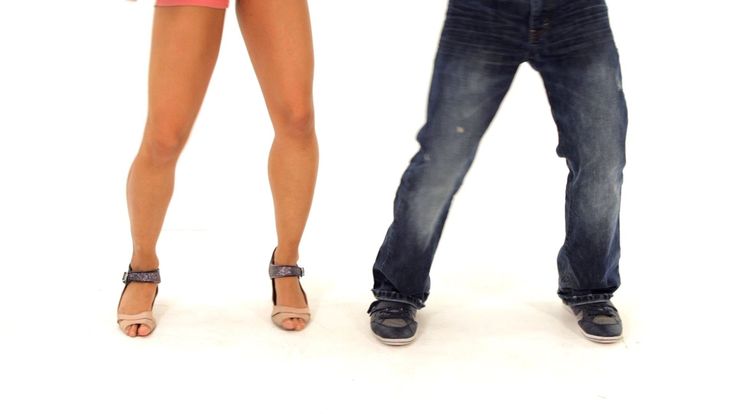 Without all of you we would not have this wonderful series to share with Frontier girls and Quest Club for Kids. Thank you.
Without all of you we would not have this wonderful series to share with Frontier girls and Quest Club for Kids. Thank you.
How did you like this dance? Leave a comment below. Dance with happy feet!
Holly Collins
WEDDING DANCE instruction
DANCE LESSONS.
author of
Holly’s hot wedding tips,
Historically Accurate Princess Dances,
Winner of:
The Knot Hall of Fame best wedding dance instruction,
top 50 Dance Blogs
Champion Ballroom Dancer & Coach
owner of
Adventures in Dance
720-276-0562
[email protected]
www.adventuresindance.com
For dance tips,
join my email
LANDLER DANCE - AUSTRIA - DanceAsk
WALTZ DANCE OR VIENNESE WALTZ - AUSTRIA/GERMANY SCHUHPLATTLER DANCE - AUSTRIA AND GERMANY
LAMBADA DANCE – BRAZIL
The Lambada dance is a renowned dance form from.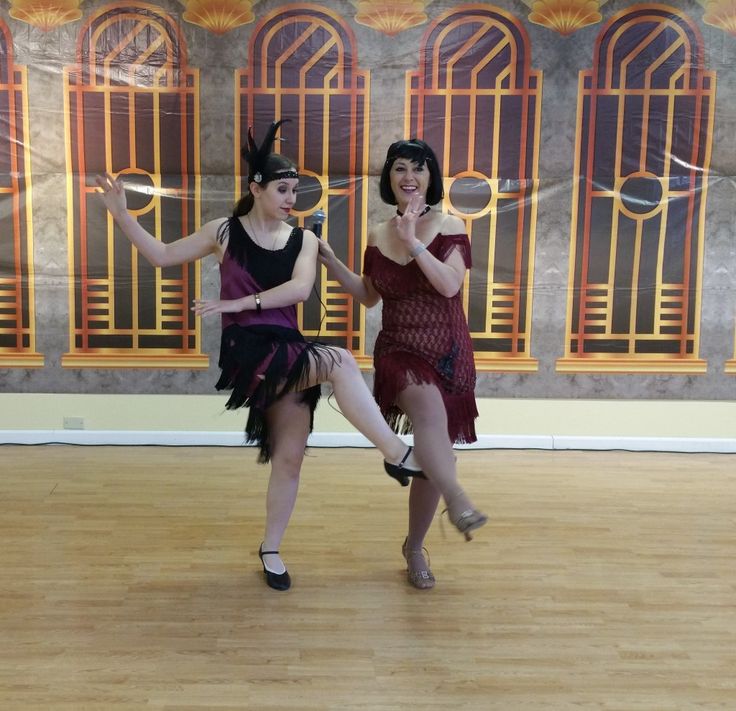 ..
..
Read more
BACHATA DANCE FROM DOMINICAN REPUBLIC
Bachata is a Latin American music genre that originated...
Read more
THE HAKA DANCE OF WAR – NEW ZEALAND
Haka dance is a Maori war dance from New...
Read more
SAMBA DE GAFERIA DANCE- BRAZIL
Created using the energetic “Samba” as a template, is...
Read more
MERENGUE DANCE – DOMINICAN REPUBLIC
Merengue dance originated in the Dominican Republic and is...
Read more
YINGGE DANCE – CHINA
Yingge is also referred to as “Egnor” and is...
Read more
How to Dance Merengue for Beginners: 4 Merengue videos
Merengue is a popular Cuban dance that originated in...
Read more
Most Popular Spanish Dances
Get to know the different types of traditional Spanish...
Read more
TINIKLING DANCE, NATIONAL DANCE OF PHILIPPINES
The Tinikling dance from Philippines is a very intriguing...
Read more
SAMBA DANCE FROM BRAZIL
Brazilian Samba dance is considered to be ‘Afro-Brazilian’ in. ..
..
Read more
LION DANCE – CHINA
Performed mainly during auspicious events such as wedding ceremonies,...
Read more
TANGO DANCE – ARGENTINA/URUGUAY
Included by UNESCO in the Intangible ‘Cultural Heritage list’...
Read more
5 MOST FAMOUS ITALIAN FOLK DANCES
Italian folk dances are an innate part of Italy’s...
Read more
GUMBOOT DANCE- SOUTH AFRICA: Secret Communication Channel Of Native Miners
Gumboot dance is an African dance form performed using...
Read more
Top Dance Studios in Dallas, Texas, USA
Looking for the top dance studios in Dallas, Texas?...
Read more
KABUKI DANCE – JAPAN
Comprising elements of “theatre” as well, is dance form...
Read more
Things You Need To Know About Portuguese Traditional Dances
Culturally speaking, Portugal is known for a number of...
Read more
LAKHON CHATRI DANCE – THAILAND
Considered to be extremely “old” is a Southeast Asian.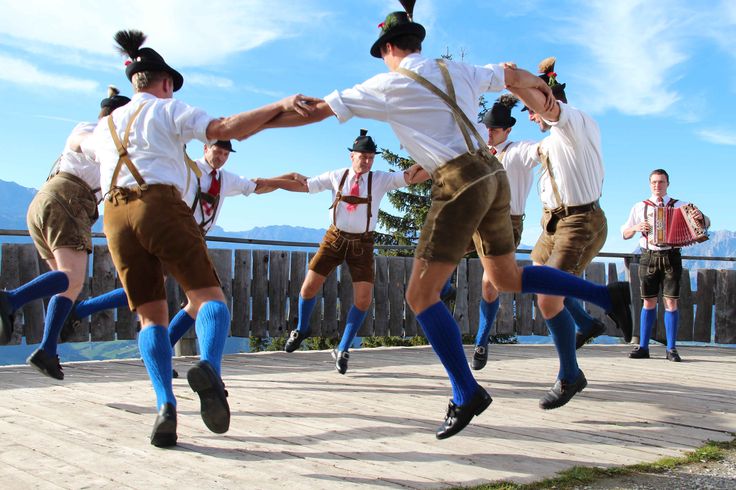 ..
..
Read more
PARASOL DANCE – Japan: ‘The Umbrella dance’
Parasol, an asian dance form is performed on a...
Read more
Bollywood Dance of India – A Baffling Dance Fusion..
The word “Bollywood” originated when the Indian film industry...
Read more
Why is Ballet Dance so popular?
When I was a kid, I was fascinated by...
Read more
Top 10 Most Romantic Dance in the World
Looking for the most romantic dances across the globe?...
Read more
Most Popular Types of Dance for Adults in the USA
Dance classes are one of the best ways to...
Read more
Top 15 USA Dance Competitions: The Ultimate List
If you think you’ve got the love and passion...
Read more
Zumba Dance – Everything you need to know!
If you’re looking for a source of physical exercise,...
Read more
Top USA / American Origin Dance Forms
I am sure most of you will agree with...
Read more
THINGS YOU NEED TO KNOW ABOUT RHUMBA DANCE
‘Ballroom rumba’ is now a popular American dance style. ..
..
Read more
All you need to know about Indian Classical Dance forms
India is a country known for its rich cultural...
Read more
Why Must Contemporary Dance Be Appreciated?
Contemporary dance is a genre of dance that involves...
Read more
Indian Classical Dance, Explaining its Role in Education
The rich Indian culture comprises of mainly two dance...
Read more
Brazilian Samba: What is it and why is popular in the culture?
“Energetic” is the ideal word used to describe a...
Read more
7 most popular forms of Salsa dance
Boys and girls, It’s time to learn salsa dance...
Read more
5 POPULAR NORWEGIAN FOLK DANCE FORMS
The Scandinavian region with its vast and unique history...
Read more
MACULELE DANCE – BRAZIL
Performed in a group by forming a circle called...
Read more
NOH MAI DANCE – JAPAN
Noh Mai Dance is a folk dance from Japan...
Read more
LANYTANC DANCE – HUNGARY
Similar to “Karikazo” is a Central European dance known. ..
..
Read more
SAMAIA DANCE – GEORGIA
Performed mainly by “women” is a Eurasian dance form...
Read more
KHORUMI DANCE – GEORGIA
Performed mainly by “males” is a Eurasian dance style...
Read more
KALAMATIANOS DANCE – GREECE
Kalamatianos is extremely “joyful and festive” a Southeast European...
Read more
JOROPO DANCE: National Dance of Venezuela
Joropo is a dance style created using elements belonging...
Read more
MAK YONG DANCE – MALAYSIA
Declared in 2005 by UNESCO as a “Masterpiece Of...
Read more
ITIK ITIK DANCE – PHILIPPINES: A dance inspired by ‘Movements of a duck’
Itik-Itik is a Philippines folk dance form created by...
Read more
SCHUHPLATTLER DANCE – AUSTRIA AND GERMANY
Schuhplattler dance is a traditional folk dance from the...
Read more
WALTZ DANCE OR VIENNESE WALTZ – AUSTRIA/GERMANY
The Viennese Waltz, or more popularly, the Waltz is...
Read more
APACHE DANCE – FRANCE
Closely linked to the “Parisian” street culture is a. ..
..
Read more
OBEREK DANCE – POLAND
“To spin” is what an exuberant East European dance...
Read more
TALCHUM DANCE – East Asia: ‘Korean Mask Dance’
Talchum is an intriguing Mask dance of East Asia...
Read more
SEUNGMU DANCE – KOREA
Seungmu dance is created and performed mainly by “Buddhist...
Read more
DRAGON DANCE- CHINA
Dragon Dance is a traditional Chinese folk dance mainly...
Read more
TROIKA DANCE FROM RUSSIA
Troika or “Trojka” means “THE TRIO”. One man dancing...
Read more
Austria
4 minutes read
Landler is an Austrian folk dance performed mainly by couples. This partner dance is said to have originated in Austria and is extremely popular in regions such as South Germany, Switzerland, and Slovenia. This dance style essentially comprises body movements such as “hopping and stamping”. Furthermore, this dance, too, like the waltz, is performed in the ¾ time signature. Furthermore, the music used in this dance form is mostly instrumental, though vocals are occasionally used.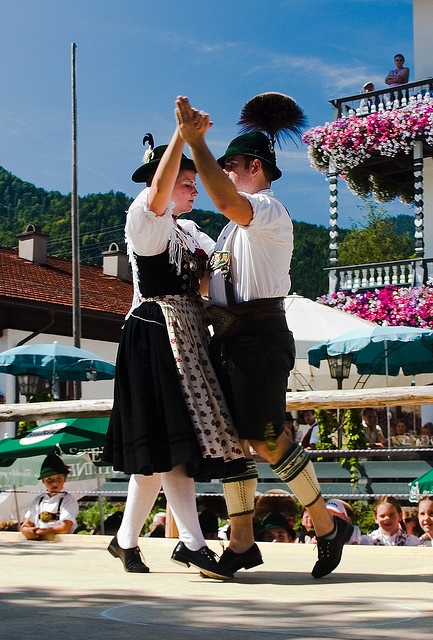
a. History/origin of the Landler dance:
The Landler was finally called the ‘Landl ob der Enns’, which was compressed into Ländler or Ländl sometime around 1690 and gained popularity around 1720. The origins of the word Ländler come from the word “Land” (country), a dance from the country-side” to dances from the court or city, signifying the state of Upper Austria (Oberösterreich) and the adjoining Styria.
It was during the 19th century that this dance is said to have been developed in Austria. Apparently, it was the gradual rise of dance halls in Austria as well as all as across Europe that encouraged the development of this dance style named Landler. Furthermore, waltz is said to have evolved from this form of dancing.
The Landler was considered the smoothest and fastest dance style known at the time, but is comparatively slow today. The Landler is also known as the Hospur.
“Traditional Austrian dance costumes” are used in this dance form, and vary according to gender.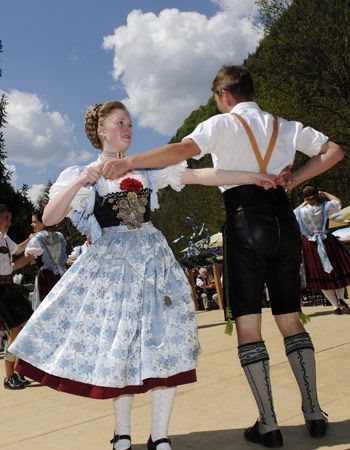 They are as follows:
They are as follows:
The attire worn includes leather shorts known as “Lederhosen”, a white open-neck shirt, white stockings, and a pair of black shoes.
2. For women:The attire worn includes a skirt, a white cotton petticoat known as a “dirndl”, stockings, and a pair of black shoes.
b. Costumes used in the Landler dance:
“Traditional Austrian dance costumes” are used in this dance form, and varies according to the gender. They are as follows:
1. For men:
The attire worn includes leather shorts known as “Lederhosen”, white open neck shirt, white stockings, and a pair of black shoes.
2. For women:
The attire worn includes a skirt, white cotton petticoat known as “dirndl”, stockings, and a pair of black shoes.
c. Choreography for Landler dance in the early ages:
Earlier, dances were often choreographed by dance-masters at royal courts and were then implemented by the people.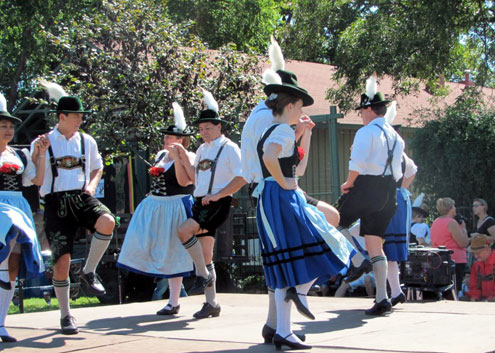 Some elements were then reused by dance-masters, so it was an exchange of dances and styles. It was a style where body contact between men and women was closer, in comparison to Menuett (minuet), circle-dances, etc. Therefore, it was too erotic and lusty, and the authorities and the church tried to restrict dancing, especially dances like this.
Some elements were then reused by dance-masters, so it was an exchange of dances and styles. It was a style where body contact between men and women was closer, in comparison to Menuett (minuet), circle-dances, etc. Therefore, it was too erotic and lusty, and the authorities and the church tried to restrict dancing, especially dances like this.
People who migrated to Vienna brought with them the Landler from these regions and developed the faster Landler-steps due to the new smooth dance floors and shoes for dancing (relegation of Hobnailed shoes), which nowadays go under the title of “Viennese Waltz“.
The Landler style is a folk dance in which couples are arranged facing one another in a line. Later, the couples would break away, and the men would dance solo and finish the ending of the dance together as a group.
d. The characteristics of the Landler dance today:
- The Landler is a couple’s dance
- It ncludes sophisticated “arm-tying” (known as “wickeln”) and turning round.
 In many Landler dances, the boys step into the middle of the formed circle and start singing (funny and short songs) and clapping (“paschen”). Landler-style dance can be wild and fast (e.g., Untersteirer Landler) or slow (e.g., Stoahauser Landler).
In many Landler dances, the boys step into the middle of the formed circle and start singing (funny and short songs) and clapping (“paschen”). Landler-style dance can be wild and fast (e.g., Untersteirer Landler) or slow (e.g., Stoahauser Landler).
e. Music involved in the Landler dance:
The musical instrument traditionally used in this dance style is the “zither”, a stringed instrument. Furthermore, nowadays an accordion is mainly used as an instrument.
f. Training availability and technique involved in the Landler dance:
In terms of technique, this dance style basically involves the use of “hopping and stamping”. Furthermore, this dance is considered to be far more elegant and quicker as compared to the waltz. As for training centers/schools, there are none available since this “folk” dance is mainly performed in countries like Austria and German
image credit
g. Some of the best Landler dance videos:
Step-by-step landler choreography demonstration:
Views: 624
LANDLER DANCE AUSTRIA
Related posts
TopLendler Online publication "Elements of Dance"
Dance vocabularyBack
Lendler is the common name for a group of Austro-Bavarian double circle dances. Performed to a lively melody, the Lendler dance is based on an alternation of eight- and six-bar phrases and corresponds to a musical time signature of ¾ or 3/8. Despite the fact that Lendler has always been considered a rather mobile and energetic dance, it cannot be called fast: for quite a long time it was danced at a slow or moderate pace.
The name of the dance comes from the German word "Land", which translates as "village", which in itself speaks of its roots: originally Lendler was performed at rural holidays. Another version, however, not rejecting the first, connects the origin of this dance with the town of Landl, located in Upper Austria.
Another version, however, not rejecting the first, connects the origin of this dance with the town of Landl, located in Upper Austria.
Formed in the 17th century, Lendler became the building material for many European dances of subsequent eras. It was he who was the progenitor of the German Deutsch, and somewhat later had a huge influence on the emergence of the waltz. And although the close relationship between the landler and the waltz is beyond any doubt, we are still talking about completely different dances, differing both in structure and tempo - the waltz is much more lively and fast than the landler.
The Lendler dance was most successful in the second half of the 18th century, when it left the open spaces of the countryside to settle in the palace halls. It took several decades for Landler to become known in the Czech Republic, Switzerland and many other European countries. The popularity of the dance was greatly facilitated by the work of outstanding composers of that time, who included its fragments in their works. For example, elements of landler can be found in Mozart's symphonies.
For example, elements of landler can be found in Mozart's symphonies.
At the very beginning of its existence, the landler was based on whirling in pairs, combined with jumps and stomp, designed to emphasize the rhythm of the dance. For this purpose, the performers used hard wooden shoes. Lendler was accompanied by folk songs. But moving to the ballrooms, he acquired grace, became more refined and aristocratic, although the guardians of morality were of a different opinion. Many people found the Lendler dance to be too frank and immoral, since the dancers were in unacceptable proximity to each other and even touched their hands.
The growing popularity of the "indecent dance" led to the fact that everyone knew about it. At the same time, various versions of it were formed, corresponding to the choreographic traditions of individual regions: Switzerland, Bohemia, Germany, etc.
If the village landler was danced at a moderate pace, then its ballroom version acquired a more lively character, changing in accordance with fashion trends. The late Lendler is considered the grandfather of the waltz.
The late Lendler is considered the grandfather of the waltz.
Even being supplanted by the waltz, the Lendler did not find itself on the cultural sidelines and survived in the works of Austrian and German authors, entering the suites of Schumann, Bruckner's symphonies, Brahms' waltzes: as a rule, with its help, composers recreated the spirit of the past.
Release archive
Dance German Landler, Folk Themes and others... | Crystal Castle
Scheme:
Starting position: K opposite D, back to the center of the circle, r. with hand supports l.r. ladies.
Main step: landler promenade.
Introduction (8 measures) greeting.
1st movement (8 measures)
Measure 1 Partners turn to H.T. and from the outside leg promenade forward, bringing the joined hands in front of you.
Tact 2 H.T. Promenade with turning to each other and pulling hands back (against ch.t.)
Measures 3-4 Partners turn around on kh. t., promenade forward bringing their joined hands in front of them, K raises the lady’s hand and she turns under her arm in hours. With.
t., promenade forward bringing their joined hands in front of them, K raises the lady’s hand and she turns under her arm in hours. With.
Cycle 5 H.T. Promenade with turning to each other and pulling the hands back (against the c.t.)
Measure 6 Partners turn around in the c.c. and from the outside leg promenade forward bringing the joined hands in front of him, K takes l. hand p. hand ladies
Bars 7-8 with a slight advance To the left hand behind the line rotates the lady against ch.s. and unfolds along the x.t.
At the end, K and D stand shoulder to shoulder, outer arms are connected by an arch over their heads, right. the gentleman hugs the waist of the lady and holds her l.r.
[1]
2nd movement (8 measures)
Measures 1-4 (music speeds up) ch.t.
Bars 5-6 steam turns counterclockwise. 180°
Measures 7-8 D returns to its place with a clockwise twist, K returns to its place. At the end, the partners intercept their hands crosswise with their hands on top.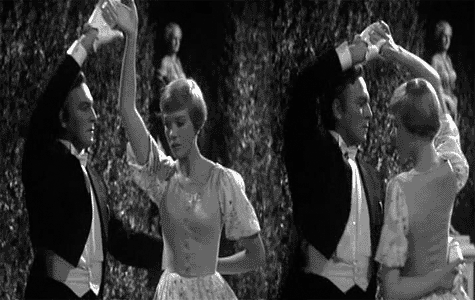
[2]
3rd movement (8 measures)
Measures 1-2 K takes small steps in ch.t., while D makes a turn in clockwise direction. under joined hands. The hands of the partners do not let go, keeping the contact with the inner sides of the fingers. At the end of the measure, the arms are crossed, l.r. above.
Bars 3-4 D makes small steps in ch.t., at this time K makes a counterclockwise rotation. under joined hands. The hands of the partners do not let go, keeping the contact with the inner sides of the fingers. At the end of the measure, the arms are crossed, p.p. above.
Bars 5-8 repeat T.1-4.
[3]
4th movement (16 measures)
Measure 1 The couple starts moving to the center of the circle, right. rise to eye level.
Stroke 2 p.p. are brought up and, having let go, go down in a large arc, meanwhile the left ones are brought to the level of the eyes.
Stroke 3 HP are brought up and, having let go, go down in a large arc, meanwhile the right ones are connected at the bottom.
stroke 4 l.r. join under the right.
Bars 5-8 R.1-4 advancing from the center.
Bars 9-16 bars 1-8
[4]
5th movement (16 bars)
Bars 1-4 The joined hands on the first bar are crossed closer to the gentleman and he “dives” his head into the window formed by the hands of the lady, rotating in place by 360 °, after the beginning of the turn by the gentleman, the lady also turns after the hands.
Bars 5-16 The lady does the same, then again the gentleman and again the lady
[5]
6 movement (16 bars)
Bars 1-4 under the arms, without taking them away from the hands of the gentleman, two turns. As a result, the right hands create a vertical window through which the left hands are extended. D turn out to be a person against the ch.t., the gentleman - according to the ch.t.
Measures 5-6 The couple turns clockwise. 180°
Bars 7-8 D stops and K goes around her for another half circle to her place without removing her hands.







